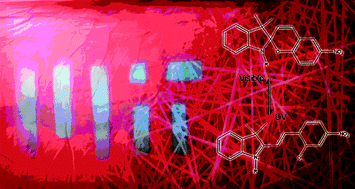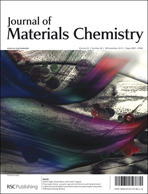Tunable and durable photochromic materials are a rapidly expanding area of interest, with applications ranging from biomedical devices to industrial-fields. Here we examine electrospun poly (methacrylic acid) PMAA nanofibers covalently modified with the highly photochromic molecule, spiropyran (SP) or a derivate SP which is firstly coupled to a cyclodextrin molecule (βCDSP). The photochromic properties of the starting materials and of the nanofibers were investigated. βCDSP, PMAASP and PMAA-βCDSP polymers exhibited a reverse photochromism. The kinetic results revealed a faster isomerization process for the βCDSP molecule, than that for the PMAA-βCDSP and for the PMAASP, the slowest one. The fastest isomerization is attributed to the presence of a large number of hydroxyl groups of the βCD which stabilizes the merocyanine form via hydrogen bonding, and the slowest isomerization is related to the PMAA chain structure that stabilizes the spiropyran form. Thus, combining the PMAA and βCD properties the photo-isomerization can be modulated. The photo-reversibility of this material was verified by UV-visible measurements cycling visible and UV light. Infrared spectroscopy and water contact angle were used for the nanofiber surface characterization, demonstrating the presence of the spiropyran on the mats surface and also showing a minimal effect on nanofiber size and shape when compared to PMAA fiber.

You have access to this article
 Please wait while we load your content...
Something went wrong. Try again?
Please wait while we load your content...
Something went wrong. Try again?


 Please wait while we load your content...
Please wait while we load your content...